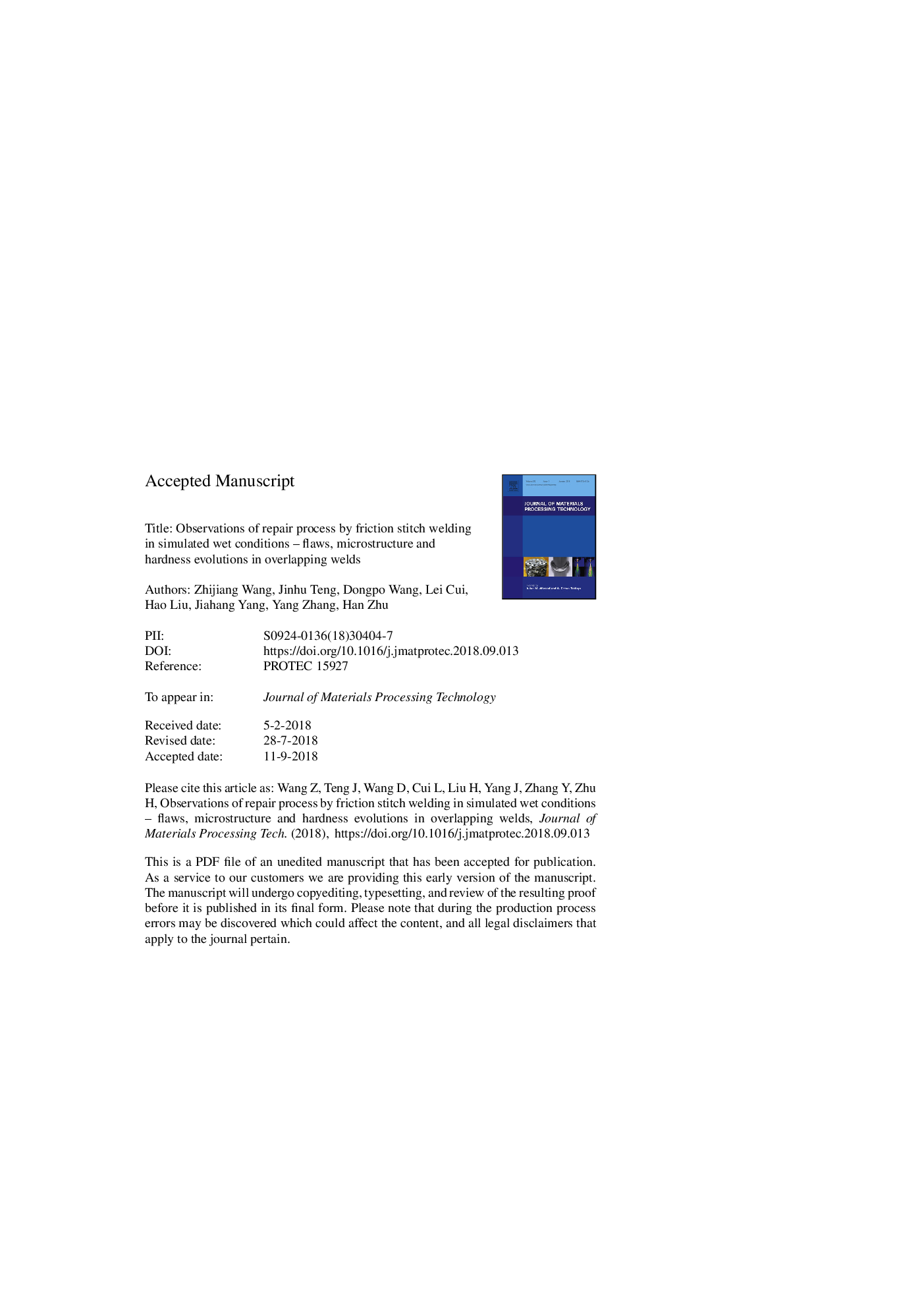| Article ID | Journal | Published Year | Pages | File Type |
|---|---|---|---|---|
| 10146781 | Journal of Materials Processing Technology | 2019 | 32 Pages |
Abstract
The overlapping friction taper plug welding (FTPW) process influences the overlapped welds and bonding quality of the friction stitch weld, therefore, flaws, microstructure and hardness evolutions were observed with the progress of overlapping FTPW process in a simulated wet condition to study the forming mechanism of underwater friction stitch welding. DH36 plugs were used to repair the arc welded DH36 joint. Six burn-off distances (namely consumptions) of plug were chosen to observe the intermediate status of flaws, microstructure and hardness. With the increase in burn-off distance, bonding was firstly formed at the bottom, then at the sidewall and finally at the rounded corner. In the overlapping FTPW process, the microstructure was coarse lath martensite and hardness up to 410 HV10 in the center of stir zone while acicular ferrite and grain boundary ferrite with hardness from 290 to 320 HV10 was observed at the rounded corner of stir zone; fine lath martensite was observed and hardness was about 370 HV10 in the forged zone in upper part of the overlapping friction taper plug weld; the overlapped friction taper plug welds were tempered and the hardness was reduced with a minimum about 250 HV10. The overlapping FTPW process study shows increase in heat input at the location of flaws at the beginning of the process, improving material flow at the location of flaws, and good plug material selection will promote the weld quality in underwater friction stitch welding.
Keywords
Related Topics
Physical Sciences and Engineering
Engineering
Industrial and Manufacturing Engineering
Authors
Zhijiang Wang, Jinhu Teng, Dongpo Wang, Lei Cui, Hao Liu, Jiahang Yang, Yang Zhang, Han Zhu,
